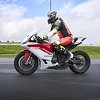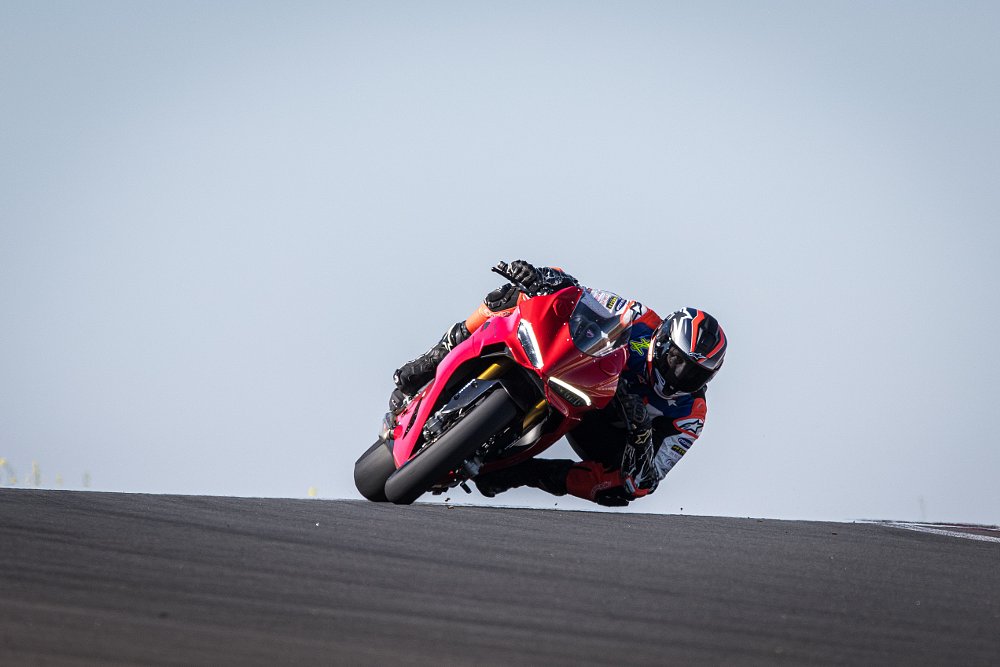Yamaha’s FZ-09 naked bike hit the streets in 2014 and was an immediate hit. Much of its popularity stemmed from a raucous motor — the three-cylinder, 847 cc “CP3” platform has tons of usable grunt and sounds wicked. Many riders, myself included, consider the CP3 one of the best engines out there in terms of real-world performance and character.
Yamaha wisely transplanted the flexible CP3 into other platforms, including the XSR900 neo-retro naked and Tracer 9 (formerly Tracer 900) sport-tourer. More than a decade after the CP3 debuted, the 2025 YZF-R9 sport bike is the fourth model to feature the famed motor, and this might be the best application yet.
A sentiment shift
Yamaha spent a lot of years reeling riders in with the YZF-R6’s stratospheric redline. Peak power figures and high revs raise our heartrates, but performance-at-all-cost motorcycles are expensive and impractical street bikes. Eventually, riders came to that realization. The result? Yamaha nixed the R6 in 2020.
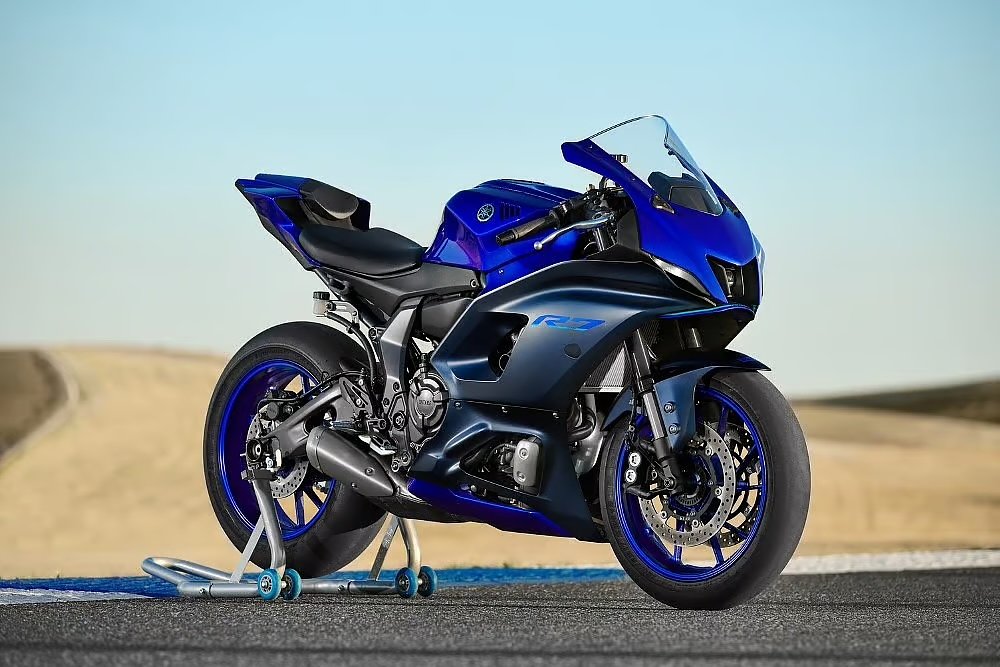
To address the shift in consumer sentiment, Yamaha has switched its focus to building lower-cost sport bikes with “accessible performance.” The 2022 YZF-R7 was the first representation (a successful one at that — Yamaha says it's their top-selling model), and the R9 is the second.
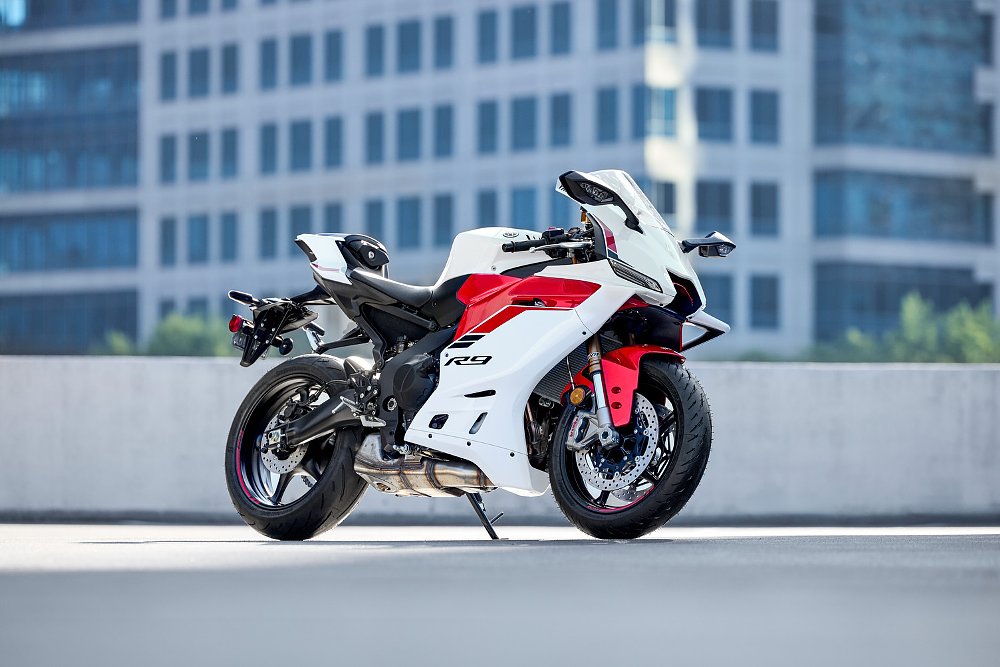
CP3 performance is nothing if not available. Rather than waiting until 10,000 rpm to wake up, this engine rocks right out of the gate. The torque curve is essentially flat and sits above 50 foot-pounds (rising to a peak of 68) from the time you let the clutch out until the rev limiter kicks in. Meanwhile, power climbs steadily to roughly 117 ponies (as per Yamaha Europe specs). Immediate and abundant thrust like that is great for slicing through traffic, as well as rocketing off of apexes, which meant the engine just needed a similarly athletic and adaptable chassis to meet its mandate.
Meet the new R9
The recently updated 890 cc mill from the 2024 MT-09 remains unchanged in the YZF-R9, which, other than an emissions-related handicap I’ll talk about later, is a good thing. That motor hangs in an all-new aluminum twin-spar frame that’s 10% lighter than the MT’s and stiffer in key areas for better braking and cornering performance. It’s mated to a swingarm that mimics the MT-09s, but with longer dropouts and threaded bungs for mounting swingarm spools. The YZF-R6 may have been phased out, but its wheels roll on here, bolted to fully adjustable KYB suspension front and rear.
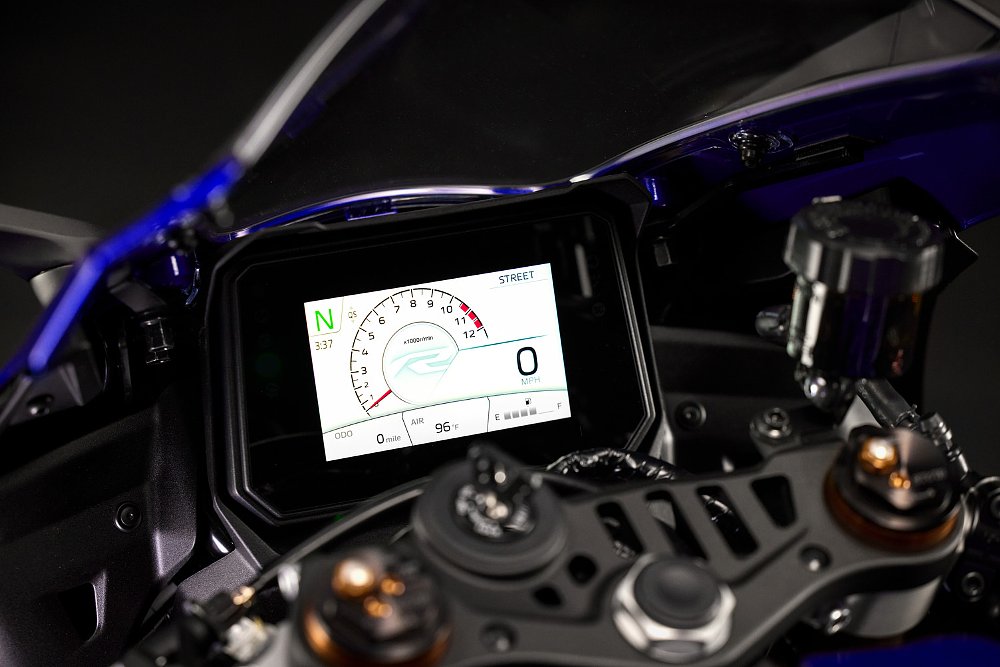
Primo brake components, including full-size 320 mm discs, Brembo radial-mount calipers, stainless steel lines, and a radial master cylinder, support the R9’s performance objectives. So does the bi-directional quickshifter, shift linkage that readily switches to GP pattern, the full suite of IMU-informed electronics, including Y-TRAC telemetry, and aerodynamic (the slipperiest, according to Yamaha) bodywork with functional downforce.
Hey wait, isn’t this bike supposed to be less extreme? Balancing out all that go-fast tech and making the R9 more functional and flexible is a revised rider triangle and features like cruise control, remote preload adjustment for the shock, and height-adjustable footpegs. In their standard position, the pegs are an inch lower and an inch forward compared to the R6’s, while the seat is half an inch lower and almost an inch and a half closer to slightly taller clip-ons.
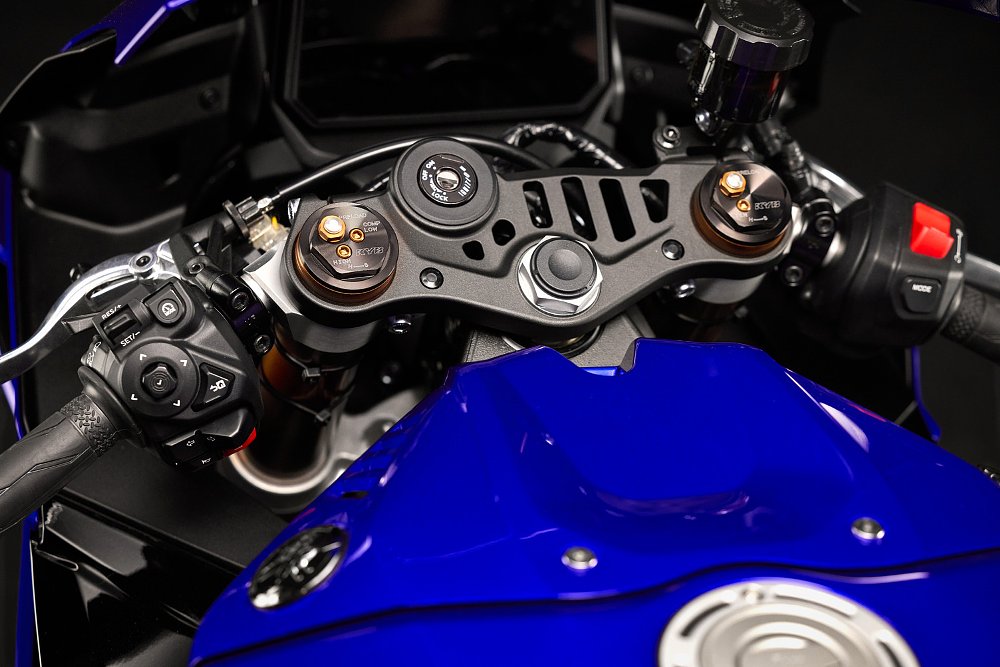
The recipe sounded right, and I was eager to see if melding the CP3 with a supersport chassis would yield the easier-to-ride, grin-inducing machine that Yamaha and so many riders were hoping for.
CP3 at Sonoma
Most people think of wine when Sonoma, California, is mentioned, but I imagine the 11-turn circuit draped over the rolling hillsides just north of San Pablo Bay. Sonoma Raceway is dynamic and demanding. It’s my all-time favorite track, and a tremendous place to put any bike through its paces.
Unfortunately, the weather wasn’t eager to see anyone drag knee. The day started with wet weather and rain tires mounted on the bikes. I took my time (read: procrastinated) before heading out into the drizzle. The delay gave me time to gather some first impressions.
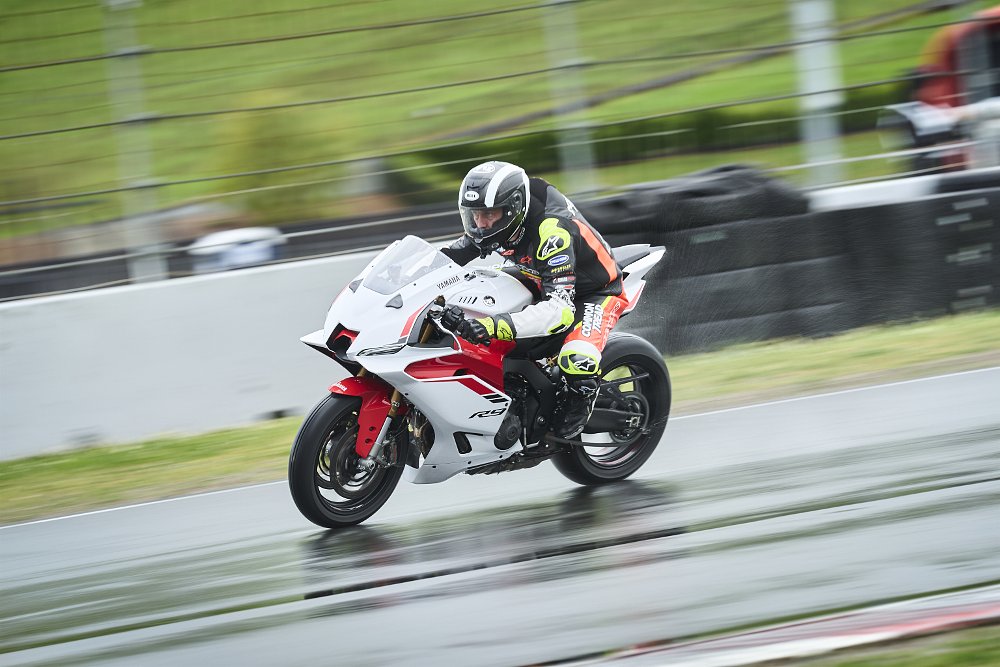
Visually, the bike presents as fairly large. The front of the R9 is wide on account of the wings, and that breadth is carried rearward. Climbing aboard, there’s decent legroom and the reach to the clip-ons was less of a stretch than Yamaha’s R-bikes have trained me to expect. Overall, the rider triangle is a good balance of control and comfort. It’s still fairly aggressive and my knees were nearly at an acute angle, but the package is a far cry from the fully committed attack position presented by purebred sport bikes of yore.
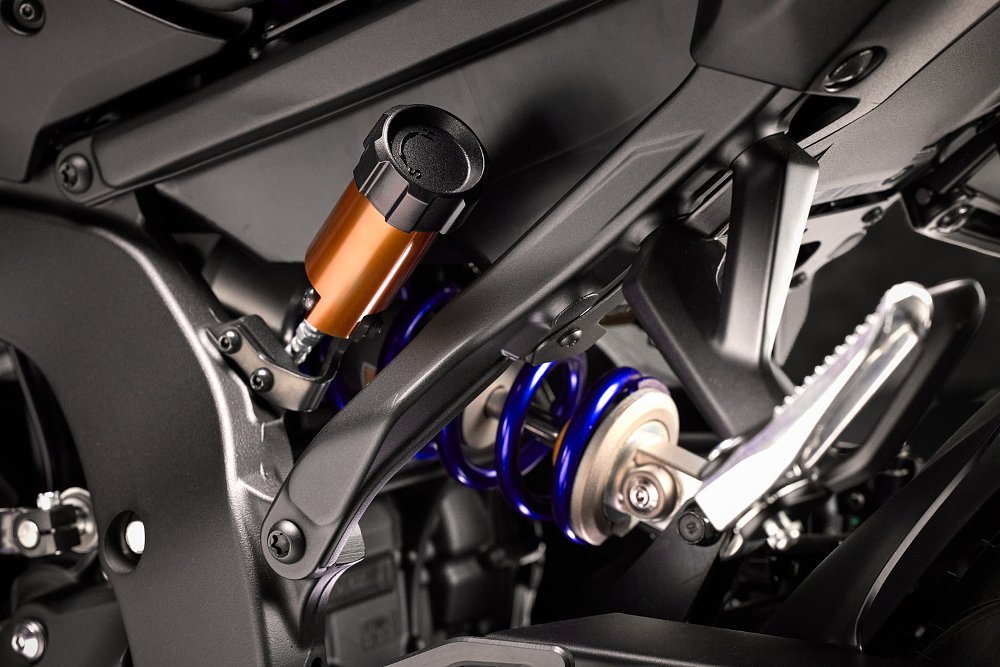
Cranking the engine yields a familiar and enticing three-cylinder growl, and after clicking the transmission into first I rolled out into the rain. Those first few laps were tentative and cautious, but they highlighted the R9’s smooth fueling, a huge improvement over the original FZ’s abrupt light-switch response. In the few places where I felt confident rolling the new short-throw throttle to the stop, the R9 lunged forward on a surge of torque. The rev limiter kicks in hard at 10,500 rpm, well short of an inline-four’s 15,000-plus revs, but then again all of the R9’s rev range is usable. Occasionally, the rear tire spun up as the ribbed Bridgestone tires struggled with standing water, painted lines, or mud. Traction control intervened as it should, keeping the rear end in line on the slick surface.
Even with generally restrained throttle application, I could still sense the lag in second gear that we were first subjected to on the ‘24 MT-09. In response to noise-emissions regulations, Yamaha limits the throttle-plate angle until revs reach 6,000 rpm. On the street it’s an annoyance, but on the track it’s downright frustrating and kneecaps an engine that would otherwise give you a choice between gears in any corner.
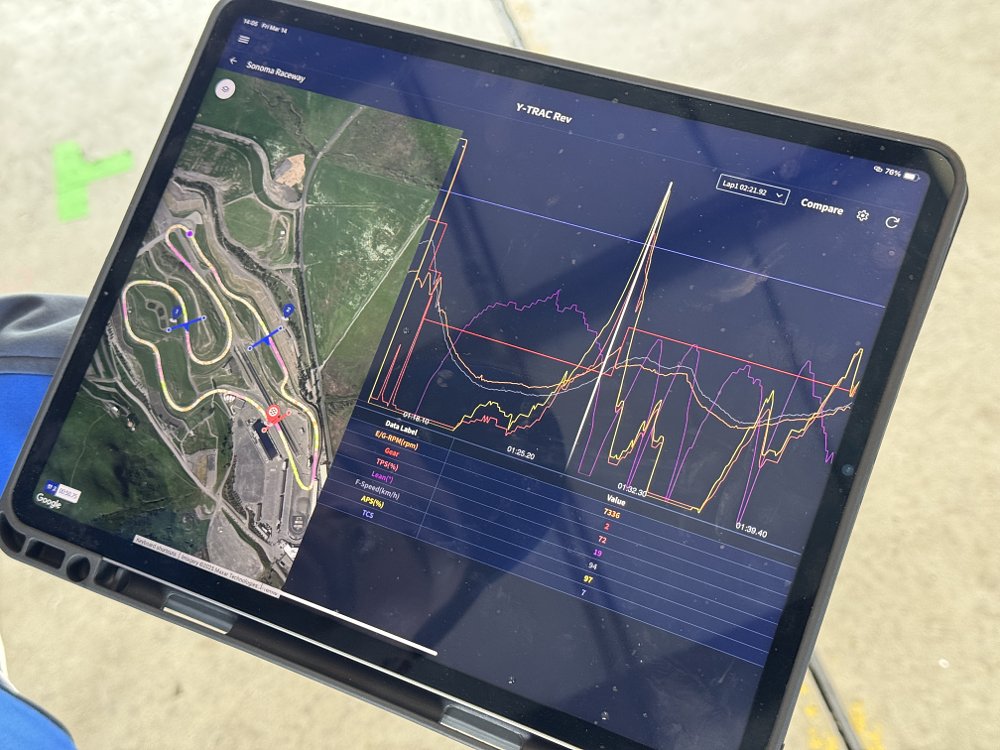
In later sessions, when water wasn’t running across the track, I put more force into the bike with braking and cornering loads. KYB’s latest fork lives up to its role, as does the shock, both of which were on street settings. I’ve described Yamaha brakes as feeling wooden for years, but the R9’s arrangement is the right balance of a firm lever, solid stopping power, and excellent feedback. Braking hard while fully upright going into to T4 and T7, the lever shuddered as ABS activated, a not-so-subtle reminder that traction was at a premium.
I appreciate every opportunity to ride motorcycles, but it was a little disappointing to tiptoe around my favorite track with the R9 on a short leash. The truth is, my pace was likely on par with what a B- or slower A-group rider would achieve on a dry day, and there was no doubt in my mind that rider would have an easier time extracting speed from the R9 than an inline-four alternative.
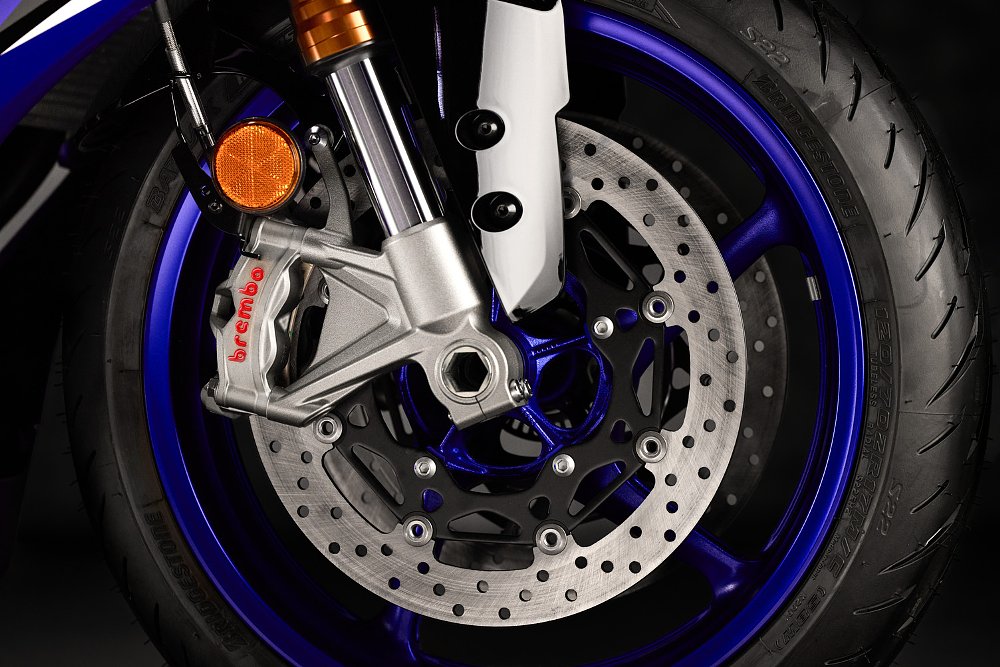
Still, there was a lot I wasn’t experiencing, both in terms of the Yamaha’s performance and Sonoma Raceway’s thrilling layout. Then, toward the end of the day, the track dried enough that the rear rain tire was overheating and getting greasy. I pulled in to ask the techs about installing dry-weather rubber, and as they were swapping tires more rain blew through. Most of the riders got out of their leathers and Yamaha staff began loading bikes, but me and one other rider waited by our motorcycles in the garage, watching the pavement lighten as it dried. With less than 15 minutes left to the day, we headed out. I took one lap to scrub in the tires and bed in the brand-new brake discs, and then I released the aggression I’d been restraining all day.
Abundant traction and sharper handling made me feel like a hero, and my previously delicate steering, throttle, and brake movements were replaced by forceful inputs as the pace picked up. Carrying an extra gear and another 15 mph through Turn 5, the rear end got light while braking over the hill into the downhill, 180-degree turn known as The Carousel. My knee puck kissed the pavement as the world shifted to my favorite point of view: low to the ground and tangential to the horizon, with gravity pulling straight down through the leaned-over bike. It was bliss.
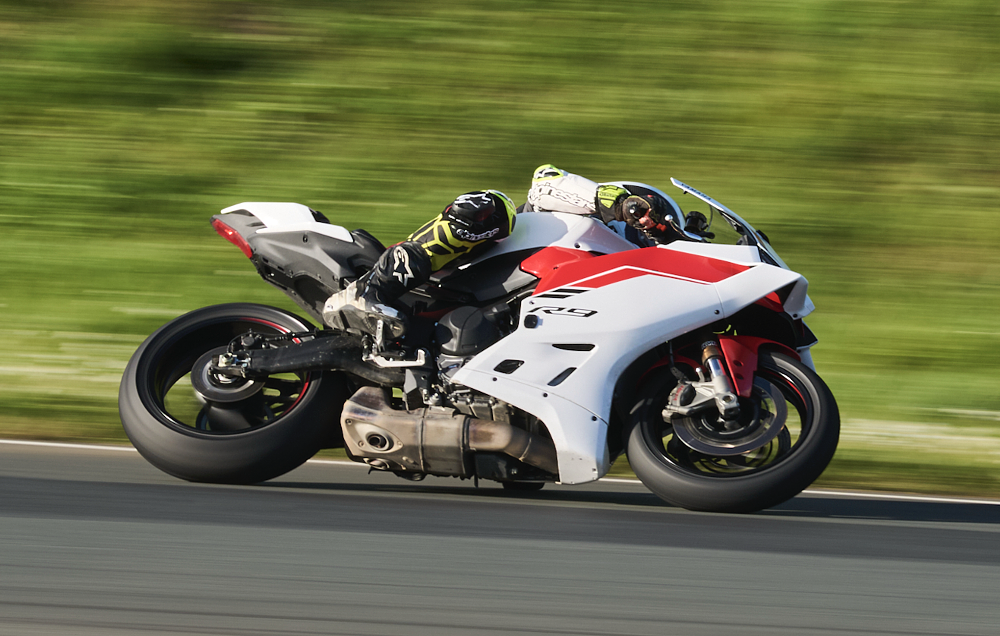
The harder I pushed, the better the bike felt, and the bigger my grin got. The second-gear chasm was a non-issue now that I was revving the bike higher, but the increased speeds revealed some other issues. The bars shook in my hands a few times under hard acceleration, particularly when the track fell away as it does charging down toward the Turn 9 chicane. The R9 doesn’t come with a steering damper, but perhaps it should. The ABS was also engaging in the same places as it had in the rain, but there was no way the front tire was slipping. Then I recalled experiencing similar intervention on the YZF-R1M, and remembered that Yamaha’s non-adjustable, IMU-informed (meaning it monitors chassis pitch) ABS is fairly conservative. I considered asking to pull the ABS fuse, but the checkered flag was out. The day was over.
The king is dead, long live the king!
Yamaha set out to provide “accessible performance,” and that’s exactly what the YZF-R9 does. The $12,499 price is fairly accessible, too, at least when you compare it to equipment with similar specs, of which there’s only one. Ducati’s new 2025 Panigale V2 follows the same less-extreme, more manageable philosophy as the R9, but costs $15,995.
I’m not sad to see high-revving inline-fours go the way of the dodo. With the YZF-R7 and now the YZF-R9, Yamaha is embracing a new set of priorities that are better for riders and thus better for motorcycling. This new R9 is approachable and capable, with broadband performance that will satisfy a wide range of riders of varying skill levels.
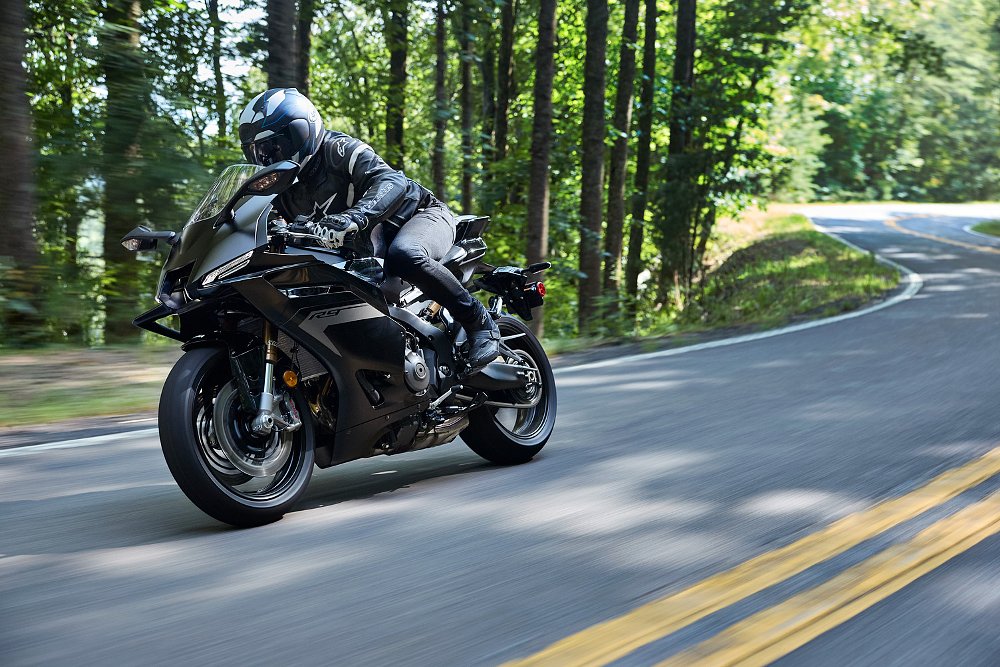
We didn’t get to ride the R9 on the street, but the riding position doesn’t seem like it’ll be too bad for around-town riding, and we already knew the CP3 was at home in the city and the country. Now we know it’s at home on the track, too. I think Yamaha has another hit on its hands.
| 2025 Yamaha YZF-R9 | |
|---|---|
| Price (MSRP) | $12,499 |
| Engine | 890 cc, liquid-cooled, 12-valve, inline three-cylinder |
|
Transmission, final drive |
Six-speed, chain |
| Claimed horsepower | 117.0 horsepower @ 10,000 rpm |
| Claimed torque | 68.5 foot-pounds @ 7,000 rpm |
| Frame | Aluminum twin-spar |
| Front suspension | KYB 43 mm fork, adjustable for preload, high- and low-speed compression, and rebound damping; 4.7 inches of travel |
| Rear suspension | KYB shock, adjustable preload, high/low speed compression and rebound damping; 4.6-in travel |
| Front brake | Dual Brembo Stylema four-piston calipers, 320 mm discs with ABS |
| Rear brake | Nissin single-piston caliper, 220 mm disc with ABS |
| Rake, trail | 22.6 degrees, 3.7 inches |
| Wheelbase | 55.9 inches |
| Seat height | 32.7 inches |
| Fuel capacity | 3.7 gallons |
| Tires | Bridgestone Battlax Hypersport S22, 120/70R17 front, 180/55R17 rear |
| Claimed weight | 430 pounds |
| Available | Late summer |
| Warranty | 12 months |
| More info | yamahamotorsports.com |








